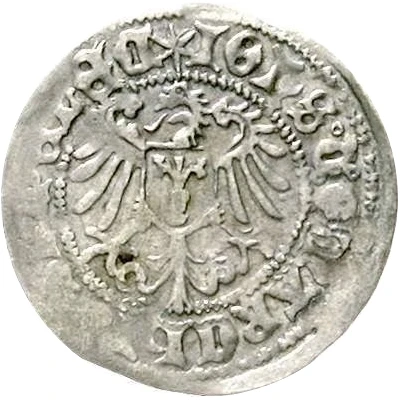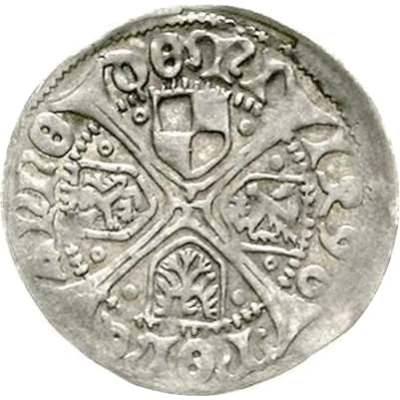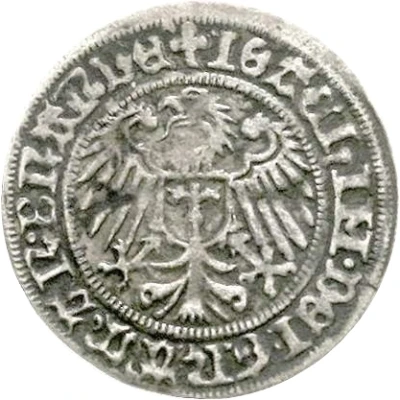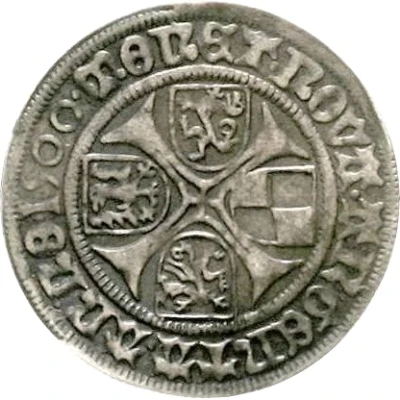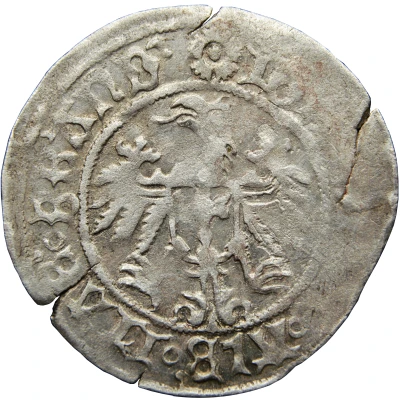
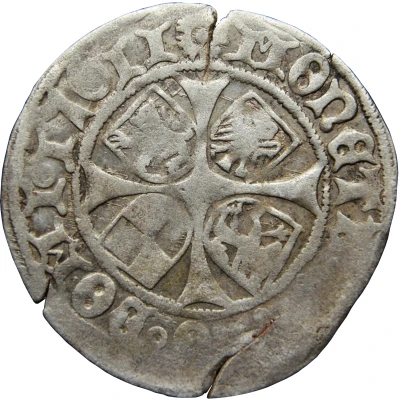

© smy77 (CC BY-NC-SA)
1 Groschen - Joachim I and Albert IV
| Silver | 2.09 g | 25.46 mm |
| Issuer | Margraviate of Brandenburg (German States) |
|---|---|
| Prince elector | Joachim I Nestor (1499-1535) |
| Margrave | Albert IV (Albrecht IV) (1499-1513) |
| Type | Standard circulation coin |
| Years | 1498-1512 |
| Value | 1 Groschen (1⁄21) |
| Currency | Thaler (1440-1618) |
| Composition | Silver |
| Weight | 2.09 g |
| Diameter | 25.46 mm |
| Thickness | 0.73 mm |
| Shape | Round (irregular) |
| Technique | Hammered |
| Demonetized | Yes |
| Updated | 2024-10-05 |
| Numista | N#120731 |
|---|---|
| Rarity index | 90% |
Reverse
Cross in circle, 4 small shields of arms in angles, date at end of legend.
Script: Latin (uncial)
Lettering: ❋ MONETA৹ ANNO৹ DOMI৹ nOII
Lettering (regular font): ❋ MONETA৹ ANNO৹ DOMI৹ NOII
Edge
Plain
Comment
Following his father's death in 1499, Joachim I, aged 15 at the time, took over the succession together with his younger brother, Albrecht (aged 9). The joint reign lasted until 1513, when Albrecht was appointed Archbishop of Magdeburg and Bishop of Halberstadt, and in 1514 Archbishop of Mainz. Curiously, it is possible to find this Gros with the vintage 1498, preceding the common reign.The vast majority of Joachim and Albrecht Gros communs indicate in their legend themint where they were struck (Berlinensis, Brandenburgensis, Stendalensis, Andermundensis, Franckfordensis or Krossensis). Other coins don't mention their provenance in the legend, and it's sometimes impossible to associate them with a workshop despite the different names at the beginning of the legend. The coin on the Numista sheet is one of these and corresponds to Barhf.# 99b. Coins without workshop indication were minted at the beginning of the Common Reign (1498-1506) and can be classified into 3 different categories according to their reverse legend:
- MONETA ANNO DOMINI
- MONETA NOVA ANNO DOMINI
- MONETA NOVA ARGENTEA
A very large number of legend and punctuation varieties are known for this Gros. Emil Bahrfeldt alone counts several hundred. The Gros is characterized by a small cross pattee, while the Gros with fleur-de-lys cross (from 1508) can be considered a separate type.
Source: Das Münzwesen der Mark Brandenburg (Bd II) von 1415 bis 1640, Emil Bahrfeldt, 1895
Interesting fact
One interesting fact about the 1 Groschen coin from the Margraviate of Brandenburg is that it features a unique combination of two rulers on its obverse side. Joachim I and Albert IV, who ruled the territory together from 1498 to 1512, are depicted side by side, with Joachim I on the left and Albert IV on the right. This dual portrait was a deliberate choice made by the mint masters to symbolize the unity and cooperation between the two rulers, and it sets the coin apart from other coins of the time that typically featured a single ruler.
